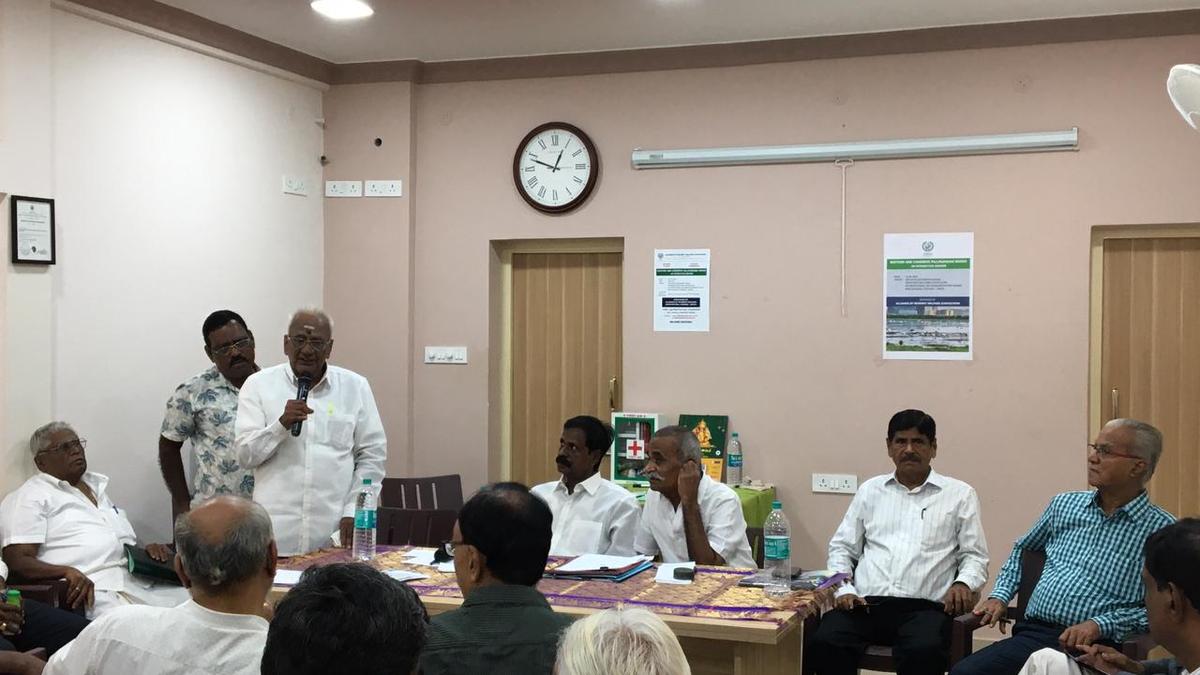
Residents’ associations pass resolution to protect Pallikaranai marshland
The Hindu
Residents demand restoration and conservation of Pallikaranai Marshland, a vital wetland in Tamil Nadu facing threats from development.
The Alliance of Residents’ Welfare Associations, a state-wide organisation, on Sunday passed a resolution demanding restoration and conservation of the Pallikaranai Marshland.
The participants unanimously resolved to take all possible steps to restore the marshland to its original dimension, conserve it, and oppose the development of an eco-park by the Greater Chennai Corporation (GCC). The residents also stressed the need for flood mitigation in the city.
The resolution pointed to the fact that the extent of the marshland had reduced from 13,590 acres in 1952 to 1,482 acres in 2024. Consequent to various petitions, cases, suo motu applications, the National Green Tribunal (NGT) by its orders on different dates has directed that the marshland be declared a reserve forest, the unauthorised occupants be evicted from the area, and the survey of the area be undertaken, duly marking the boundaries.
At a public consultation held on February 5, 2024, it was unanimously decided not to convert the marshland into an eco-park. “In this scenario, we have addressed our communication to the GCC Commissioner to withdraw his filed petition and to implement the order of the NGT, as was unanimously decided in the February 5 public session,” the resolution said.
The residents stressed the importance of Pallikaranai as an extensive low-lying area covered by a mosaic of aquatic grass species, shrubs, marshes and water-logged depressions, and a freshwater swamp, that is 2,700 years old. Pallikaranai marshland is one of the 94 identified wetlands under the National Wetland Conservation Management Programme of the Centre and is one of the three identified wetlands in Tamil Nadu under this programme, with the other two being Point Calimere and Kazuveli. The marsh’s topography is such that it always retains some storage, thus forming an aquatic ecosystem.
A project on ‘Inland Wetlands of India’, commissioned by the Ministry of Environment, Forest, and Climate Change, Government of India, had classified Pallikaranai Marshland as one of the most significant wetlands of the country. The marshland, a premier Ramsar Site, contains several endangered and threatened species and acts as a foraging and breeding ground for thousands of migratory birds from various places, both from within and outside the country.
“Construction or changing the nature of soil on these spots will severely fragment the marsh, obstruct free flow of water, and negate all attempts to restore the marshland. It is a natural flood protecting mechanism, receiving surplus water to avoid flooding in the neighbouring areas, and acts as a water storage system to improve the groundwater level. The encroached area in the marshland aggregates to a sizeable percentage of identified area and these lands, encroached by the government, private entities, and individuals, are required to be retrieved early,” the resolution added.





















 Run 3 Space | Play Space Running Game
Run 3 Space | Play Space Running Game Traffic Jam 3D | Online Racing Game
Traffic Jam 3D | Online Racing Game Duck Hunt | Play Old Classic Game
Duck Hunt | Play Old Classic Game











